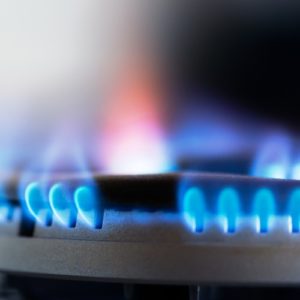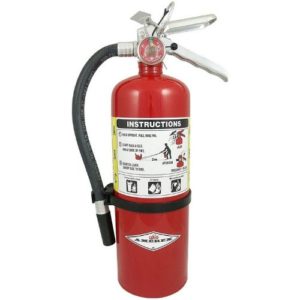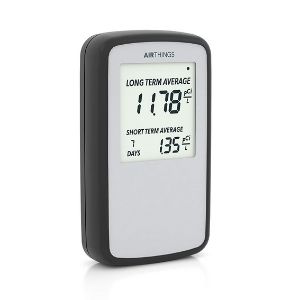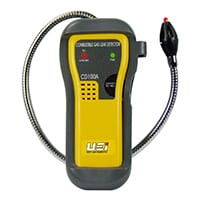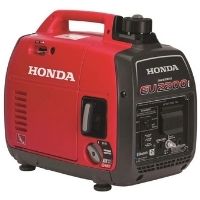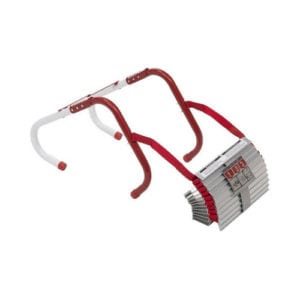How to Detect a Gas Leak in Your Home
Natural gas is a relatively safe, efficient, and convenient source of energy, providing more than half the homes in the United States with heat and the ability to cook food, dry clothing, and heat water.1 But if your natural gas is improperly installed or maintained, natural gas leaks can become a health risk and source of danger in your home.
There are also other potential sources of poisonous vapors in your home, including fumes from improperly ventilated gas generators, gas furnaces, and even attached garages. The Centers for Disease Control and Prevention indicate as many as 50,000 Americans visit the emergency room yearly due to accidental carbon monoxide poisoning.2
In addition to the health risks, gas leaks carry explosive potential due to the highly flammable nature of the vapors. If you have gas installed in your home or business or are currently experiencing fumes inside the house that you can’t identify, we’ve compiled this guide to help you detect and prevent natural gas leaks.
By signing up, you agree to our Terms and Conditions and Privacy Policy.
Video: How to find a gas leak
Subscribe to our Youtube channel for more videos like this one! Learn how to protect your home, your loved ones, yourself and your belongings.
Signs and symptoms of a gas leak
If you suspect a gas leak in your home, the very first thing you should do is turn off the pilot light or gas meter and alert your gas company or authorities. Because gas is odorless, suppliers add a potent smell similar to rotten eggs to alert occupants to the dangerous vapor and allow time for evacuation before symptoms become overwhelming.
In addition to an overpowering sulfur smell, there are a few other signs you might be experiencing a gas leak.
- A hissing or whistling sound
- Bubbles, dust, or a “cloud” in standing water
- Visible damage to a gas line connection
- House plants that suddenly die
One of the first early warnings of a gas leak or dangerous levels of gas in the home may be symptoms associated with carbon monoxide poisoning.3 This is because as the gas level increases, oxygen rates within the space drop.
Pets, children, older adults, and anyone with asthma may be among the first to suffer from symptoms of carbon monoxide poisoning. Extremely high levels may cause loss of consciousness and, without prompt medical attention, even death.
- Breathing difficulties or chest pains
- Lightheadedness or dizziness
- Headache
- Eye or throat irritation
- Nausea or reduced appetite
- Depression, irritability, or other mood changes
- Ringing in ears
- Frequent nosebleeds
How to check for a gas leak
In most cases, your nose will lead the way. Before carbon monoxide reaches dangerous levels, you’ll typically smell the odor associated with leaking gas. If you’re unsure, it’s still smart to turn off the pilot light on your gas stove, gas furnace, or gas water heater, open the windows, and get the folks who could be in danger out of harm’s way. Alert authorities immediately and don’t try to reenter the house until a professional deems it safe.
You can confirm or debunk a potential gas leak with the following tactics:
1. Listen for a hiss or whistling noise
Stop moving for a minute and focus on what you can hear. If you know where the gas line is, try to identify if it’s emitting any sort of noise. It’s not always the case that the gas is moving through a confined space, so don’t rely on this sound exclusively to determine the presence of a leak.
2. Check the gas stove or gas range top
When you turn on the burner, gas stoves will give off a blue flame. Blue indicates there is enough oxygen in the air for the gas to combust. Orange or red flames even after the stove has been lit spell trouble.
3. Try the soapy water test
It sounds like an old wives’ tale, but mix a concentrated solution of a teaspoon of dish detergent with one cup of water. Apply it to wherever you suspect a leak, like a connection or juncture, and look for bubbles to form that indicate escaping gas.
4. Use a natural gas leak detector
The surest way to find a gas leak is to use a natural gas leak detector. There are plenty of options out there, and you can read about our recommendations for the best gas leak detectors.
Be aware that gas leaks aren’t the only potential source of gas in your home. Naturally occurring gas like radon can pose significant health risks in residential areas. Unlike carbon monoxide poisoning, exposure doesn't directly result in symptoms. Radon is, however, the second leading cause of lung cancer.4
It’s recommended you test and monitor your home with radon detectors for a build-up of this noxious gas, especially in areas of the United States where screenings routinely indicate higher than average levels of radon.
Carbon monoxide detectors
*Amazon.com price as of post date. Read full disclaimer.
†Google and Google Nest Secure are trademarks of Google LLC.
Early warning of a gas leak can be vital to avoid serious consequences, so the best approach is always a proactive one. Instead of diagnosing signs of a leak, monitor your home for the elevated levels of carbon monoxide that would indicate air quality problems and alert you to danger long before you risk exposure.
Gas leaks aren’t the only source of potentially dangerous fumes in the home. Generators used with improper ventilation indoors are a leading cause of carbon monoxide poisoning, especially during peak storm season in the fall and winter months.
Carbon monoxide detectors, while not designed to detect the presence of gas specifically, can alert you to potentially hazardous levels of air quality occurring in your home. We recommend Nest Protect, a smoke alarm and carbon monoxide detector rolled into one that plays well with other smart devices in your home.
This carbon monoxide detector is part of the Nest family of devices. It integrates smoke detection, sends alerts to your smartphone, and even allows for remote control arming and disarming.
Check out our carbon monoxide detector buyers guide for a fuller range of product recommendations.
How to prevent gas leaks
In addition to being proactive about detecting air quality problems in your home, you can also prevent gas leaks and other potentially hazardous sources of carbon monoxide by conducting routine maintenance on furnaces, stoves, fireplaces and other equipment that uses gas. Additionally, ensure you properly ventilate spaces where gas is being used, whether it’s a furnace, a stove, or a generator. Last but not least, establish a monthly cadence for testing your carbon monoxide and smoke detectors, and be sure to refresh batteries annually.
Gas leaks FAQ
Technically speaking, a carbon monoxide detector is not designed to detect the presence of gas. Instead, these devices alert for elevated levels of carbon monoxide in the air that could be the result of toxic gases or air quality issues.
Any gas leak is potentially dangerous and should be handled by a professional. If you think you have a problem, evacuate your home and alert authorities. You should turn off the pilot light or gas meter, open windows, and avoid using electronics nearby. While it might be a relatively minor issue that’s easily resolved, it’s best to proceed cautiously.
Applying soapy water to your pipes and gas line connections and looking for bubbles to indicate the presence of a leak can be useful, but it’s also not conclusive. Even if you don’t see visible indications of a leak, you should still treat the smell or other symptoms you’re experiencing seriously.
Related articles on SafeWise
Sources
- U.S. Energy Information Administration, “Natural Gas Explained: Use of Natural Gas.” Accessed November 4, 2021.
- Centers for Disease Control and Prevention, “Carbon Monoxide Poisoning - Frequently Asked Questions.” Accessed November 4, 2021.
- Mayo Clinic, “Carbon Monoxide Poisoning.” Accessed November 4, 2021.
- United States Environmental Protection Agency, “A Citizen’s Guide to Radon,” May 2012. Accessed November 4, 2021.
Disclaimer
Product prices and availability are accurate as of the date/time indicated and are subject to change. Any price and availability information displayed on Amazon at the time of purchase will apply to the purchase of this product. Safewise.com utilizes paid Amazon links.
Certain content that appears on this site comes from Amazon. This content is provided “as is” and is subject to change or removal at any time.
†Google and Google Nest Secure are trademarks of Google LLC.
Compare the top home safety products
Data as of post date. Offers and availability may vary by location and are subject to change. SafeWise uses paid Amazon links.
†Google and Google Nest Secure are trademarks of Google LLC.
Recent Articles

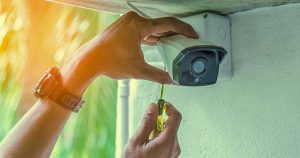


The post How to Detect a Gas Leak in Your Home appeared first on SafeWise.
Article source here: How to Detect a Gas Leak in Your Home

